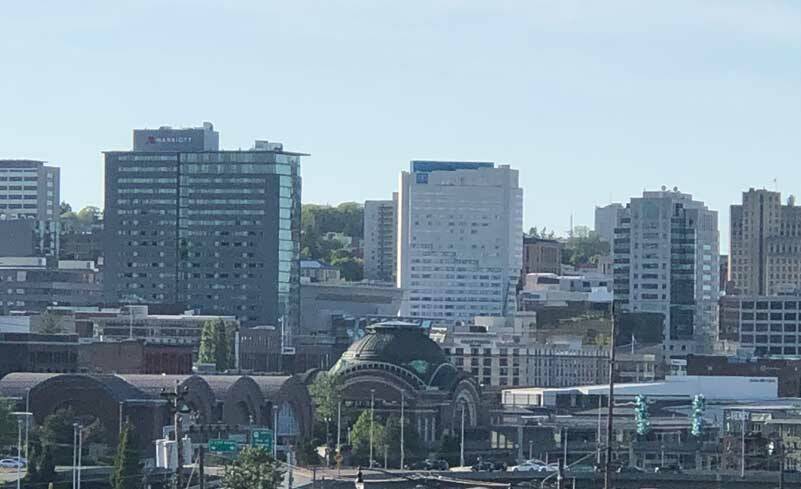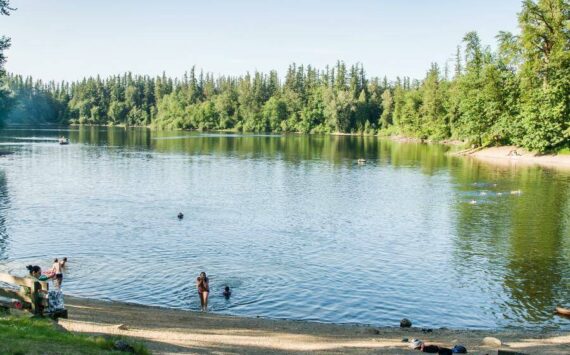By Morf Morford
Tacoma Daily Index
The first three principles of real estate investment are location, location, location.
This is true on a large, megalopolis scale as well as on a neighborhood cluster scale.
Location of a business, investment or residence is crucial to price and desirability. And we assume that location, or at least the value of any given location, will be (relatively) static. But that is almost never true.
Much of Asia, Africa and South America (among others) have many ruins of abandoned cities.
Tenochtitlan, for example, essentially the site of current Mexico City, had a population somewhere between 200,000 and 400,000 – among the largest cities (and certainly one of the most sophisticated – and cleanest) of the time (up until the 1500s).
Tacoma, by the way, has a population of a little over 200,000.
Location, it turns out, is subject to a myriad of variables which impact population, and housing values.
And these variables shift with frightening regularity – and with what author Nassim Nicholas Taleb describes as black swan events – those unexpected, even unexpectable, events that come out of the blue.
Black swan events might be something like Brexit, which in the UK erased nearly $2 trillion of value in global markets, or 9/11, where $1.4 trillion in stock market value was lost within a week.
Pandemics, depressions, famines and wars, for example, are not black swan events – they occur with depressing, almost monotonous consistency.
As predictable as they might be, those larger social and economic forces impact cities, and the lives (and livelihoods) of the individuals that sustain cities.
We in the 21st Century have a whole host of problems previous eras didn’t even consider.
From rising sea levels to the accumulation of non-biodegradable garbage (mostly plastics) to the ever-rising level of toxic waste in our air, water and soil from dumping, fracking and unauthorized disposal (or even authorized disposal, as in Fukushima nuclear waste – https://www.hakaimagazine.com/article-short/fukushima-radioactive-wastewater-dilemma/), our cities, and by cities, I mean the populations that inhabit them, are at risk to a degree few if any cities have ever faced before.
Marauding hordes, or even colonizers, are one thing, but an invisible, toxic (possibly even radioactive) landscape (or seascape) is entirely different.
Cities don’t move – the individuals that comprise them do.
Every family that leaves, or establishes itself in, a town, tilts the future of that place.
Where people live is the ultimate investment in a community.
Directly or indirectly, this is the conversation many of us are having at home, at city council meetings or at urban or regional planning meetings.
Building new housing, for example is relatively simple – but building housing where people want to – or in ten years will want to – live is an entirely different issue.
Every magazine, blog and news show seems to have ever more hand-wringing and alarming coverage of the exploding cost of housing – and the correlates to housing, from interest rates to homelessness to debt levels to resource shortages or supply line problems.
But the complexities around housing are far more than affordabilty, interest rates or the cost of lumber.
Cities are very strange things when you think about them.
Cities are not only where people collect; cities are where people cooperate.
Cities, by definition, are where the common good, clean air, public schools or reliable drinking water, for example, are available, accessible and paid for, by all.
The term “affordable housing” is a relatively new term.
Housing, besides being among the most basic of human needs, was also subject to the most essential of market forces – supply and demand.
The supply of and demand for housing is not just for housing units. Housing depends, like few other markets, on a whole constellation of outside, related factors.
Schools, jobs, reputation, future prospects and a dozen other barely quantifiable factors dictate the future life of any city.
Consider the largest city in the United States, for example; New York City.
NYC has the highest population density in the country (by far). Across the entire city, 26,403 people live in each square mile, and in Manhattan, that number is over 66,000 per square mile.
Tacoma, in contrast, holds about 4,000 per square mile (Seattle, a little over 7,000).
Compared to New York, or even Seattle, Tacoma has a lot of potential for growth.
And we in Tacoma have grown, and, if the projections are even remotely correct, we are due for far more growth.
But that isn’t true for many other small to mid-sized cities.
Many cities, from Arkansas to Italy, are offering cash or even free homes to any young families willing to resettle there.
This is something like the opposite of supply and demand – there is an ample supply, and minimal demand.
Many of those declining areas are (literally) banking on the WFH (work from home) movement.
But there is a larger issue than WFH at work.
Population; the U.S. population is experiencing its slowest growth rate since the 1930s, according to the Census Bureau, with big cities seeing just a 9 percent increase in population between 2010 and 2020 — and smaller cities shrinking away almost entirely.
As always, some cities are gaining and some are losing. The fastest shrinking city in the last decade in America was Pine Bluff, Arkansas, southeast of Little Rock, where the population dropped by 12.5 percent between 2010 and 2020. The population is now 41,250, down from 49,000.
Other shrinking cities are in West Virginia, including Charleston, where the population dropped by almost 12 percent since 2010. The city now has a population of 45,264, down from a recent high of 51,400.
Other declining cities include Elmira, New York, which shrank by slightly more than 7 percent to a population of 27,110.
Imagine what housing prices are doing in response.
Housing prices here are also responding to population shifts.
But those numbers won’t always go up.
They certainly will for the next year or two (or five),
But after that is anybody’s guess.
World population is expected to drop – and keep dropping for the foreseeable future.
Many cities, like Tacoma, are frantically building housing and changing zoning laws.
If current population trends continue, we will have yet another inversion of the supply and demand balance, where supply of housing, on a near permanent basis, outstrips demand.





